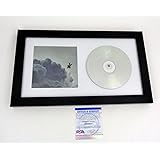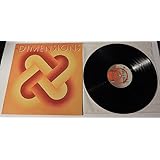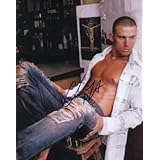We’ve all been there: staring into a closet full of clothes, wondering, “What exactly does ‘smart casual’ even mean?” It’s a dress code that promises effortless style but often delivers sartorial panic. You’re trying to strike the perfect balance—professional enough for work, relaxed enough for social interactions, and chic enough to feel confident. It’s a common dilemma, and one that the excellent video above begins to clarify with practical “do’s and don’ts” for smart casual work outfits.
The concept of smart casual can feel like a moving target, especially in today’s evolving work environments. It’s not quite business formal, nor is it strictly business casual. As the video highlights, it exists in a unique space between dressy casual and business casual, making it ideal for those social business events where professionalism meets a relaxed atmosphere. But to truly master this versatile dress code, we need to delve deeper into its nuances, understanding the ‘why’ behind each choice and how to build a wardrobe that embodies sophisticated ease.
Decoding the Smart Casual Dress Code for Professionals
The term “smart casual” emerged as a response to the increasing informality of the workplace, yet it retains an air of polished professionalism. It’s about intentional choices that elevate comfort without sacrificing credibility. For many professionals, especially those early in their careers or transitioning to roles with less rigid dress codes, understanding this distinction is crucial. It directly impacts how you are perceived by colleagues, clients, and superiors.
Research, for instance, often indicates that professional appearance can significantly influence first impressions, affecting perceptions of competence and trustworthiness. A well-executed smart casual look projects confidence and attention to detail, showing that you respect both yourself and the occasion. This isn’t about expensive brands; it’s about fit, fabric, and thoughtful coordination.
Smart Casual vs. Its Closest Neighbors: A Clearer Picture
To truly grasp smart casual, it helps to distinguish it from similar dress codes:
- Dressy Casual: This is generally more relaxed than smart casual. Think nice jeans, a stylish top, and fashionable flats for a dinner party or casual date. It’s less about the workplace and more about social events where you want to look put-together but not formal.
- Business Casual: This typically implies a higher degree of formality than smart casual. It often involves tailored trousers, skirts, blouses, button-down shirts, and blazers. Jeans are usually out, and sneakers are almost always a no-go. Business casual is the everyday office standard for many corporate environments.
Smart casual takes the best elements from both—the comfort and personal expression of dressy casual, combined with the professionalism and polish of business casual. It’s the perfect sweet spot for a range of professional settings, from networking events to team lunches, or even a ‘casual Friday’ that requires a bit more polish.
Key Elements of Smart Casual Work Outfits
Building a successful smart casual wardrobe involves focusing on specific pieces and understanding how to combine them effectively. The video touched on a couple of crucial points; let’s expand on those and introduce others.
The Art of Choosing Bottoms: Beyond the Blue Jean
The video correctly advises against light-washed, distressed, or overly casual jeans. Instead, it advocates for a
A tailored dark wash jean is indeed a cornerstone of smart casual. The darker hue naturally looks more formal, and a tailored fit ensures a sleek, put-together silhouette rather than a slouchy one. Look for denim with minimal fading or distressing. However, your options extend far beyond just jeans.
- Tailored Trousers: Think chinos, wool-blend trousers, or refined linen pants in neutral colors like navy, charcoal, black, or even olive. A well-fitting pair of trousers is inherently smart.
- Chic Skirts: Midi skirts (A-line, pencil, or pleated) in quality fabrics like wool, heavy cotton, or sophisticated blends are excellent choices. They offer elegance and comfort. Avoid overly short skirts or very flimsy, casual materials.
- Elevated Jumpsuits: A well-tailored jumpsuit in a solid color can be a fantastic one-and-done smart casual option, especially when paired with a blazer or sophisticated accessories.
Sophisticated Tops: The Foundation of Your Look
The shift from a casual cotton t-shirt to a silk or satin button-up, as recommended, immediately elevates any outfit. The luxurious drape and subtle sheen of these fabrics communicate polish. But the range of appropriate smart casual tops is quite broad:
- Refined Blouses: Beyond silk and satin, consider blouses in elegant prints or solid colors made from crepe, rayon, or high-quality cotton poplin. Opt for interesting details like a subtle puff sleeve, a tie-neck, or a unique collar.
- Elevated Knitwear: Fine-gauge knit sweaters, cardigans, or even polished polo shirts in merino wool, cashmere, or quality cotton blends can work beautifully. Avoid chunky, overly casual knits or anything with visible pilling.
- Camisoles and Shells: These are perfect layering pieces under blazers or cardigans. Choose those made from silk, satin, or other dressy fabrics.
The Power of Layering: Blazers and Jackets
A blazer is arguably the most versatile piece in a smart casual wardrobe. It instantly transforms almost any outfit into something more structured and professional. A study by Northwestern University found that dressing formally can increase abstract thinking, suggesting a psychological boost in professionalism when wearing structured attire like blazers.
- Structured Blazers: A well-fitting blazer in wool, linen, or a blend is essential. Experiment with colors beyond black and navy—think subtle plaids, jewel tones, or pastels for a modern twist.
- Tailored Jackets: A refined utility jacket or a structured moto jacket (in leather or a sophisticated fabric) can also add an edge while maintaining a smart aesthetic. Ensure they are clean, well-maintained, and free of excessive embellishments.
Footwear and Accessories: The Finishing Touches
No smart casual ensemble is complete without the right shoes and accessories. These elements tie the whole look together and can elevate even the simplest pieces.
- Sophisticated Footwear: The video mentions heels, which are always a good choice. Other excellent options include polished loafers, elegant ballet flats, sophisticated ankle boots, or even clean, minimalist sneakers (but only if the rest of your outfit is very smart and the sneakers are pristine and design-forward, not your gym shoes). Avoid flip-flops, overly casual sandals, or worn-out athletic shoes.
- Thoughtful Accessories:
- Jewelry: Opt for understated yet elegant pieces. A simple necklace, classic earrings, or a chic watch can add polish without distraction.
- Bags: Choose a structured handbag, a sophisticated tote, or a clutch that complements your outfit. Avoid overly casual backpacks or canvas bags.
- Belts: A quality leather belt can define your waist and add a refined touch.
- Scarves: A silk or patterned scarf can introduce color and texture, instantly elevating a plain top or blazer.
Remember, the goal of smart casual is to look effortlessly polished, approachable, and professional. Every item in your smart casual work outfits should look intentional and well-cared-for, reflecting your personal brand with confidence and style.











